Endoscopic Sphincter Augmentation (ESA)
Discover a comprehensive guide to Endoscopic Sphincter Augmentation ESA. An advanced treatment for gastroesophageal reflux disease (GERD). Are you frequently experiencing acid reflux? Then you may be among the many individuals who suffer from GERD.
In other words, it’s a chronic condition where acid reflux persists despite medication or lifestyle changes. GERD often stems from a weak esophageal sphincter or a hiatal hernia. Nevertheless, at our facility, we specialize in advanced surgical interventions. Specifically Endoscopic Sphincter Augmentation (ESA) procedures, to effectively address the underlying causes of GERD.
How do Surgeons Perform the Endoscopic Sphincter Augmentation?
ESA involves minimally invasive techniques to strengthen the esophageal sphincter and repair hiatal hernias. Lastly, making the necessary repairs to treat GERD often requires two procedures. To improve the function of the lower esophageal muscle. Therefore, the typical steps involved are:
- Firstly, the medical team administers anesthesia to the patient and completes the positioning.
- Then the surgeon inserts the endoscope through the mouth into the lower esophagus. Without any incisions.
- The endoscope is a small, thin, flexible tube that carries a suturing device. Surgeons use this to pass sutures into the LES, thereby tightening it.
- Secured with sutures, this will support and tighten the sphincter muscle.
- Finally, surgeon remove the endoscope.
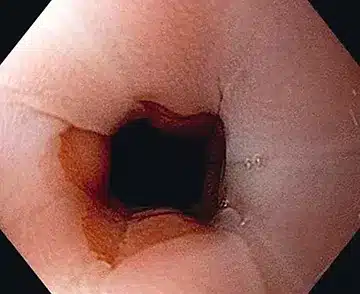
Fig. 1 Antegrade view of the gastroesophageal junction before endoscopic augmentation.
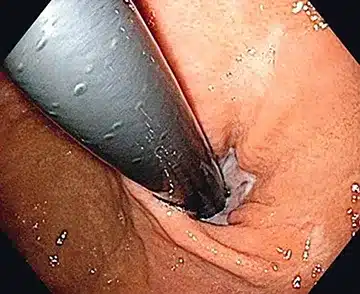
Fig. 2 In the retroflexed view of the cardia before endoscopic augmentation. The surgeon notes a diaphragmatic hiatus.
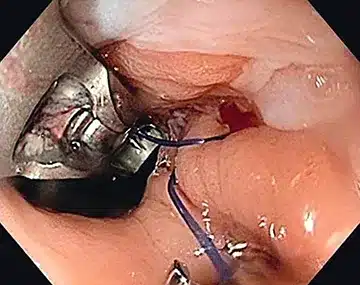
Fig. 3 The surgeon placed a simple interrupted suture from 12 o’clock to 3 o’clock on the gastroesophageal junction. Further using a double-channel therapeutic scope with the Apollo OverStitch device. Then, the surgeon placed another suture from 3 o’clock to 6 o’clock. Moreoever reinforcing as needed to reduce the width of the gastroesophageal junction.
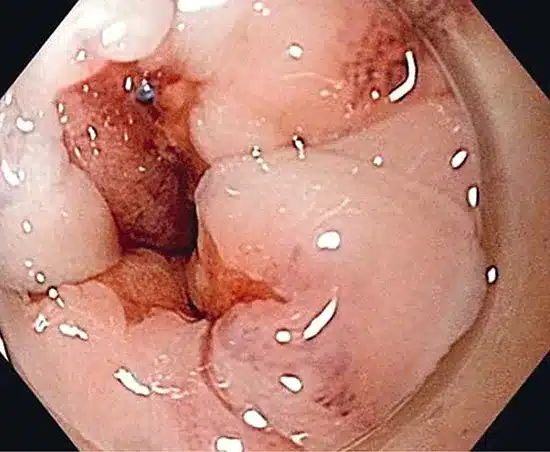
Fig. 4 Antegrade view of the gastroesophageal junction after completion of the endoscopic augmentation.
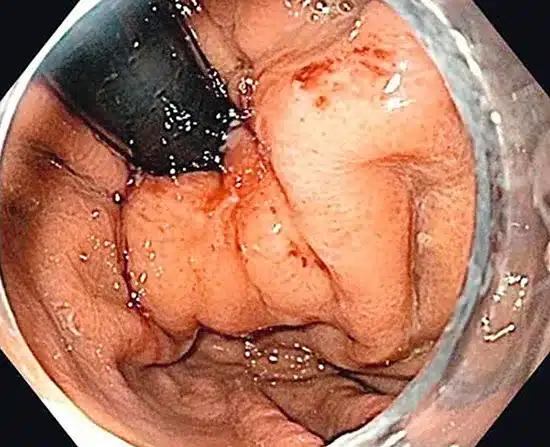
Fig. 5 Retroflexed view of the cardia after completion of the endoscopic augmentation. There was no hiatus between the gastroscope and the gastroesophageal junction.
Who is the Candidate for ESA Treatment?
Patients of any age who have chronic acid reflux have been unresponsive to alternative non-invasive treatments. Henceforth, they are the right candidates for the ESA procedure. While utilizing cutting-edge technology and skilled medical professionals. We have provided lasting relief to many GERD patients. Above all, our expert medical team will improve patients’ quality of life by offering personalized treatment plans.
What are the Benefits of Endoscopic Sphincter Augmentation?
- Same day procedure.
- Excellent results – 95% success rate.
- Endoscopic procedures carry fewer risks.
- Recovery time is faster.
- Very little pain associated with recovery.
- Performed through only a few small incisions.
What are the Risks of Endoscopic Sphincter Augmentation?
Endoscopic procedures generally carry fewer risks than surgery. However, associated with less pain and quicker recovery times. Similarly, as with any surgical procedure, it does have associated risks. For instance, the risk of a negative reaction to general anesthesia, bleeding, infection, and injury to internal organs.
How much does ESA Treatment Cost?
Certainly, the cost of GERD surgery depends on which procedures surgeons perform. Additionally, the presence of a hiatal hernia, the extent of the repairs necessary, and the use of mesh. However, if you’re seeking a long-term solution for your GERD symptoms, visit our Pricing Page.
Call us or schedule a teleconsultation. Nonetheless, our team understands the importance of insurance coverage. Thus, our customer support team will assist you. Furthermore, explore how our financing options, including the CareCredit. It can provide coverage for traditional medical insurance copayments and elective procedures.
Find disorder stages related to Heartburn, Acid Reflux, and GERD. Calculate your GERD score today.






